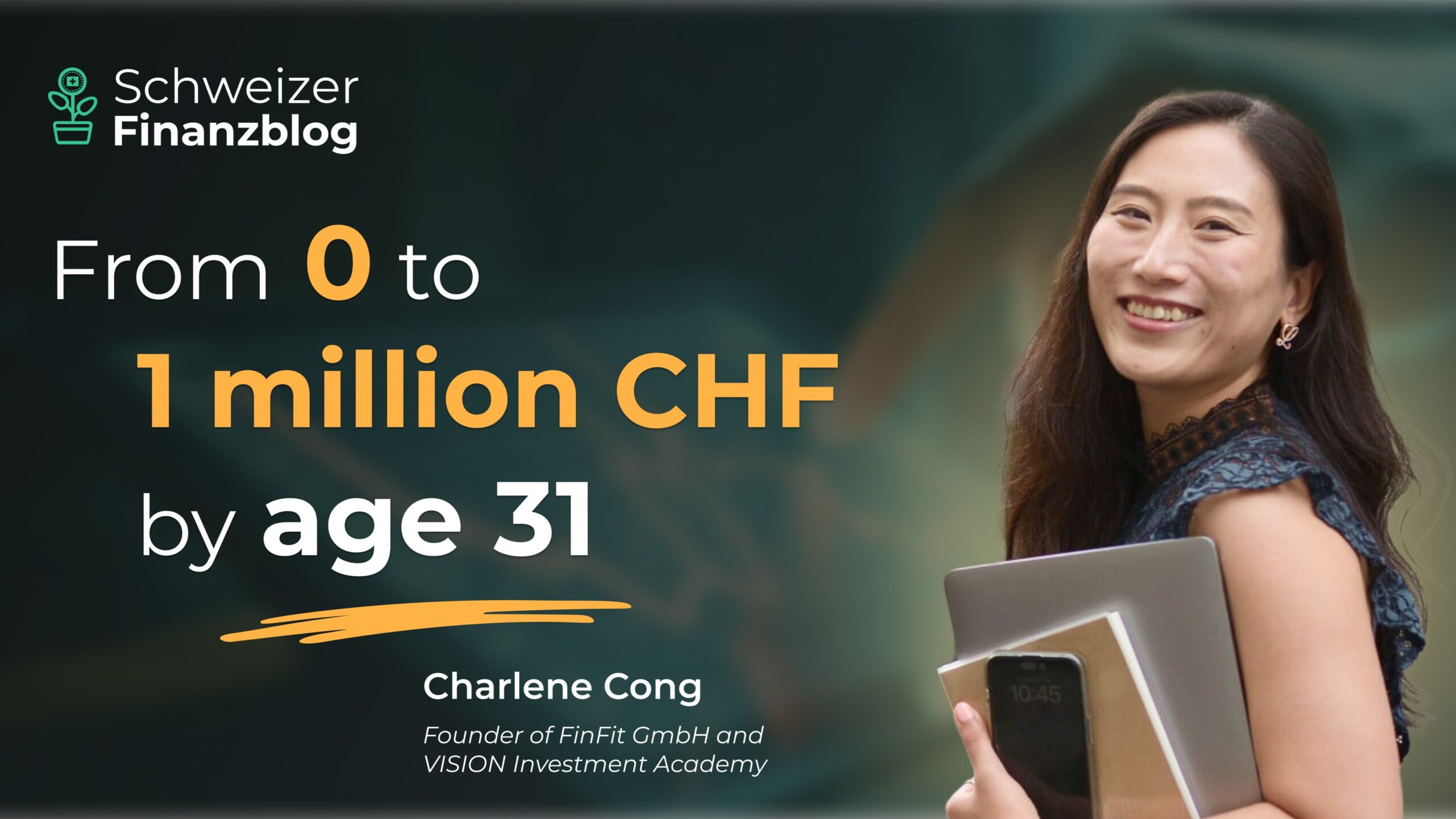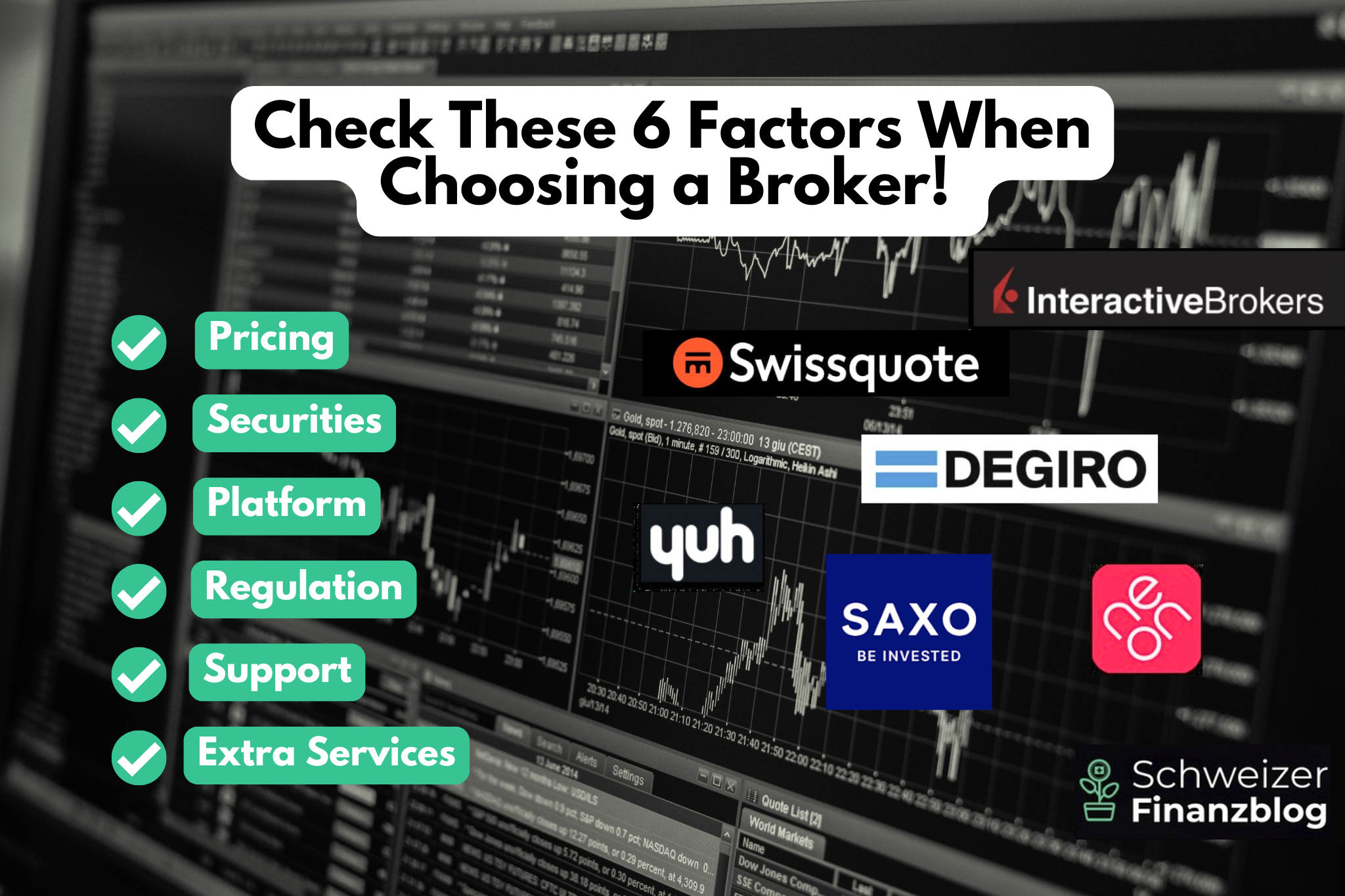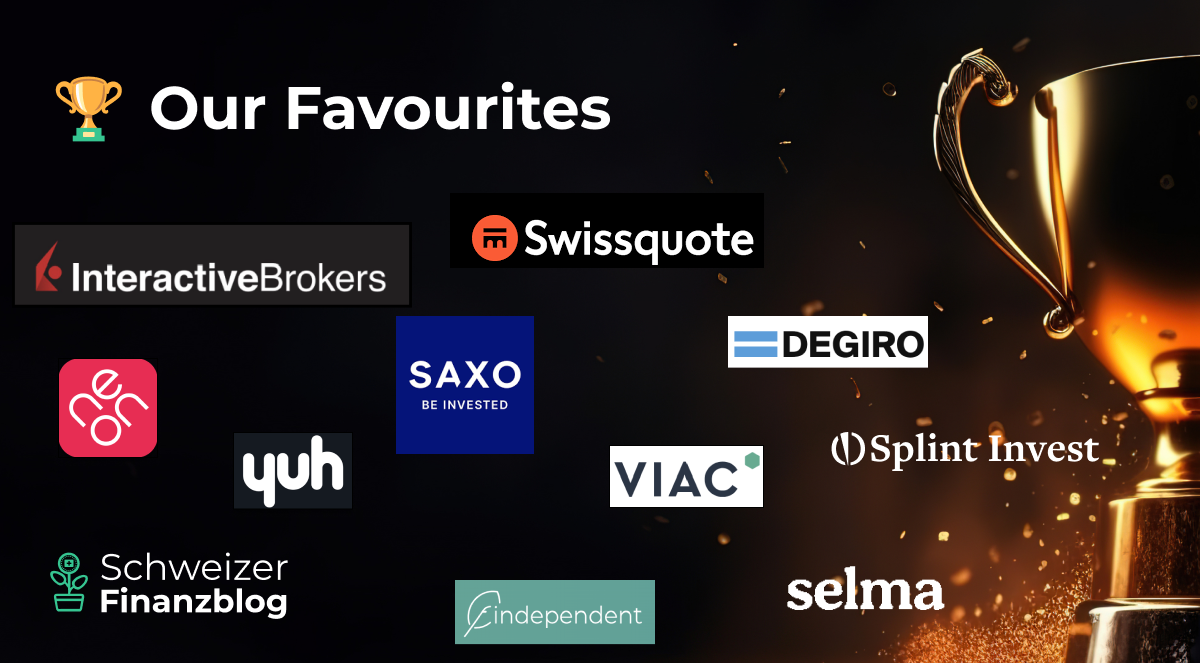
We have often written about the compound interest effect in this blog. In conversations, however, we realize time and again that even very smart people can hardly imagine the power behind it. We also find ourselves thinking linearly – exponential growth remains abstract.
High time to take a closer look: Why do most people never experience the “8th wonder of the world” – as Albert Einstein is said to have called it? And what can be done about it? Or to put it more pointedly: if the effect is so simple, why do so many people fail to turn it into real wealth?

Short & sweet
- The compound interest effect is the basis for long-term wealth accumulation.
- Many hardly notice it because they give up too early or think linearly instead of exponentially.
- The first 10 years often seem sobering – after that the turbo ignites.
- Practical tip: The rule of 72 shows how quickly your capital doubles due to the compound interest effect (72 : return in % = years until doubling).
- Anyone striving for financial freedom must make consistent use of the compound interest effect.
- The savings rate is the greatest lever: the higher and the earlier, the greater the absolute effect.
- The easiest way to do this is with regular, automatic savings plans in broadly diversified equity ETFs – at low fees and without unnecessary withdrawals.
Contents
- What does compound interest actually mean?
- The compound interest effect slowed down: 6 typical stumbling blocks
- Financial freedom needs compounding
- Investment vehicle for the compound interest effect
- Test it yourself: Our compound interest calculator
- The ingredients must go together
- And what happens when the goal is reached?
- Updates
- Disclaimer
What does compound interest actually mean?
The German-language term is slightly misleading: “interest” does not only refer to traditional bank interest – which hardly plays a role today anyway. The principle of reinvesting income is crucial. This includes everything that an investment yields: interest, dividends and also capital gains. This is clearer in English: compounding describes the interaction of all these yields. It is precisely this principle that ensures that wealth can grow exponentially rather than linearly over time.
You can think of it like a worker that you have to pay alone at the beginning. But as soon as the first earnings are generated and reinvested, you hire more “workers”. Each of them earns money for you without you having to lift a finger yourself. With patience, this “team” will grow steadily – and at some point, the passive income generated in this way will significantly exceed the traditional labor income.
A brief calculation example
Anyone who invests CHF 10,000 for 40 years with an annual return of 8% and consistently reinvests all income will generate assets of around CHF 243,000 thanks to compound interest.
If, on the other hand, you were to place the annual 8% like a coupon in a separate, non-interest-bearing account, you would only end up with around CHF 42,000 after 40 years.
In the first few years, the difference hardly seems worth mentioning – after 10 years, the advantage of the compound interest variant is only CHF 22,196 compared with CHF 18,000 for the coupon.
However, from this point onwards, the gap begins to widen: The longer the investment period, the more growth accelerates.
After 40 years, the difference is already over CHF 200,000 – making the compound interest effect the legendary “8th wonder of the world”!

The rule of 72: compound interest for practitioners
If you want to understand the compound interest effect without a calculator, you can use a simple rule of thumb – the rule of 72. It shows after how many years your capital will roughly double if you know the annual return:
72 : Yield in % = years until doubling
Example:
- With a 6% return, it takes around 12 years,
- at 8% only 9 years.
This simple calculation makes it immediately clear how much of an impact even small differences in returns can have – and why long-term investing pays off. The higher the return or the longer the investment horizon, the more powerful the compound interest effect.
If you want to know exactly, use our interactive compound interest calculator below.
The compound interest effect slowed down: 6 typical stumbling blocks
Stumbling block no. 1: Our brain thinks linearly
We are evolutionarily trained to understand linear developments: Step by step, year by year. In everyday life, many things work linearly – if I drive for an hour at 60 km/h, I cover 60 km; if I work twice as many hours, I earn about twice as much; if I run 10 km every week, I will have covered 100 km after 10 weeks.
Exponential growth, on the other hand, remains difficult for us to grasp. A classic example is the grain of rice on the chessboard: one grain is placed on the first square, two on the second, four on the third – and so on. After half of the board it still looks harmless, but in the end there are over 18 trillion grains (18,000,000,000,000,000,000,000) – an almost unimaginable number.
This is precisely why we wrote in the article Behavioral Finance: How to avoid the 13 biggest investment mistakes that misjudging the compound interest effect is probably the biggest investment mistake of all.
Stumbling block no. 2: Too little patience
The first ten years can be frustrating. Example: If you invest CHF 10,000 with an 8% return, you will only have around CHF 22,000 after 10 years – a plus of CHF 12,000. After 20 years it is CHF 49,000, after 30 years CHF 109,000 and after 40 years CHF 243,000.
The decisive factor: The big leverage comes late. Many give up beforehand and prefer to invest in consumption – and never exploit the potential.
| Year | Value (CHF) | Increase per 10 years (CHF) |
| 0 | 10’000 | 0 |
| 10 | 22’196 | +12’196 |
| 20 | 49’268 | +27’072 |
| 30 | 109’357 | +60’089 |
| 40 | 242’734 | +133’377 |
Stumbling block no. 3: Amounts too small
Those who regularly invest small amounts also benefit from compound interest, but the “wow moment” only comes with higher savings rates.
The mechanism is identical – but in absolute figures it makes a huge difference whether you end up with a six-figure sum for a little more security or a seven-figure sum as the basis for financial freedom.

– Partner Offer –
Investing smaller or larger amounts on a regular basis is the be-all and end-all of systematic wealth accumulation. The easiest way to do this is with an automatic savings plan. Saxo now offers all of its more than 100 ETFs eligible for savings plans without purchase commissions.


– – – – –
Stumbling block no. 4: Interruptions
If you withdraw capital after a few years, you destroy the compound interest effect. Compounding only works if no withdrawals are made over a longer period of time.
With an 8% return, CHF 10,000 becomes around CHF 243,000 in 40 years. However, a one-off withdrawal of CHF 5,000 after 10 years reduces the final value to just CHF 188,000 – a loss of CHF 55,000 caused by an early withdrawal of just CHF 5,000.

Stumbling block no. 5: Emotions & volatility
Market fluctuations are unsettling. If you sell in a panic, you take away the opportunity for decades of growth.
One example: During the coronavirus crash in March 2020, the MSCI World lost around -30% in just a few weeks. Many investors sold out of fear – only to watch the markets climb to new record highs a few months later. Those who got out missed out on the phase in which the biggest gains were made.
Emotions can therefore destroy the compound interest effect twice over:
- Panic in crises: Capital is sold at a loss and is missing during the upswing.
- Euphoria in high phases: Investors get in at high prices and buy when prices are already overheated.
The stock market does not reward the smartest or the fastest, but the disciplined who persevere. Investing legend Warren Buffett puts it in a nutshell: “The stock market is an instrument for transferring money from the impatient to the patient.”

You can find specific tips on how to keep a cool head in turbulent phases in the article: Stock market crash guide: How to master market crises with confidence and profit in the long term.
Excursus: Lombard loan – double benefit, double risk
More risk-averse investors like Toni also used Lombard loans as a compound interest booster. This makes it possible to boost returns during upswings – and to buy more cheaply after price dips. In return, however, there are higher risks: Additional funding obligations or even forced sales can reverse the effect.
Read more in the article: Lombard loan when buying ETFs: Booster for your return on equity or playing with fire?
Stumbling block no. 6: Costs, taxes, inflation & currency risks
The compound interest effect only unfolds its full power if it is not slowed down by costs, taxes, inflation or currency risks. We take a closer look at these four factors below.
- Fees: An ETF with a 0.1% expense ratio (TER) is vastly superior to a fund with a 1.5% TER in the long term. Over 40 years, this can easily amount to a difference of several hundred thousand francs (see chart below).
- Taxes: In Switzerland, investors are privileged because capital gains are tax-free. Only dividends and the assets themselves are taxed. You can find out more about possible tax savings in connection with your investment in the article ETF taxes Switzerland: Optimize your portfolio with these 5 tax-saving tips.
- Inflation: It eats away at purchasing power, but is not controllable. In Switzerland, it is historically much lower than in the USA or the eurozone – usually only around 1% p.a. This is an advantage: nominal yields of 6 – 8 % often still mean a real return of 5 – 7 % in this country. Nevertheless, even moderate inflation can noticeably reduce purchasing power over decades.
- Currency risks: Swiss investors often invest in globally diversified ETFs. This broad diversification is advantageous in the long term, as you benefit from the development of the global economy. At the same time, however, the strong franc can weaken some of the returns because foreign income is worth less when converted into CHF. This has a dampening effect on the compound interest effect and should be taken into account when planning.

Conclusion: If you really want to benefit from the compound interest effect, opt for low-cost ETFs, pay attention to tax optimization wherever possible – and always keep an eye on inflation and currency risks.
Financial freedom needs compounding
If you want to achieve financial freedom, you cannot avoid the compound interest effect. Alternatives such as inheritances or lottery winnings depend on luck – they are neither predictable nor reliable.
If you want to take matters into your own hands, you need to harness the power of compound interest. You can find out more about this in our article Financial freedom – hype or a goal worth striving for?
Albert Einstein is said to have once described compound interest as the “eighth wonder of the world”: “Those who understand it earn from it… those who don’t understand it pay for it.”
But beware: reality is not linear
The charts we have shown in the article are based on a constant average return – 8% p.a. in the example. In practice, of course, things don’t run so smoothly:
- Some years bring +20% or more.
- Other years end with -10% or even -30%.
- The effect is only smoothed out over longer periods of time.
Is 8% even realistic?
The figure is not a fantasy value:
- Over the last 100 years, the S&P 500 has achieved an average nominal return of around 10% per year. After inflation, this leaves around 6 – 7% in real terms.
- In recent decades, the MSCI World has achieved a nominal return of around 7 – 9%, i.e. 4 – 6% in real terms.
- The SPI (Swiss stock market) is also in this range in the long term, albeit slightly lower.
Important: Our example calculations with 8% are nominal – taxes, fees and inflation are not taken into account.
Investment vehicle for the compound interest effect
The compound interest effect depends on income not being consumed but consistently reinvested. This is the only way to create the snowball effect in the long term. In the following overview, we show which forms of investment are particularly suitable for this – and which are less so.
Investments with (+) and without (-) compound interest effect
You can find out more about particularly convincing equity ETFs in our big comparison Best ETFs Switzerland and globally 2025: And the Winner is…
Test it yourself: Our compound interest calculator
The theory is one thing – it gets even more exciting when you can use your own figures: Starting capital, savings rate, expected return, investment horizon.
We have developed our compound interest calculator for precisely this purpose. So you can see immediately:
- how much your capital can become in 10, 20 or 40 years,
- how much of an impact even small changes in returns or savings rates can have,
- and what patience really means.
Click here for the compound interest calculator:
Compound interest calculator
Calculation
If you have 10 years, monthly 100CHF to 5% invest, your Final capital 23.763CHF. This is made up of 17.000CHF Deposits and 6.763CHF Interest or investment income.
Diagram
The ingredients must go together
The compound interest effect is powerful – but only if several factors work together. A single ingredient is not enough:
- A lot of patience: The effect takes time to become visible. The snowball only starts rolling with an investment horizon of more than 10 years and picks up speed with each passing year.
- Relevant savings rate: As a rule of thumb, at least 10% of income. Anyone who increases their income should allow the savings rate to grow in absolute terms – or even more effectively increase the savings rate itself, e.g. to 15% or more.
- High-yield investment: The equity asset class has historically proven to be by far the most attractive. Low-cost equity ETFs on global indices such as MSCI World or FTSE All World are the most suitable.
Warren Buffett is a prime example: he bought his first share at the tender age of 11. Today, he is one of the richest people in the world. The remarkable thing is that around 99% of his current wealth (over USD 100 billion) was only created after he turned 50 – thanks to a lot of patience, constant investing and compounding.
Important for all those who do not want to or cannot build up assets for 40 years until (early) retirement: The compound interest effect also unfolds over shorter periods of time. From around 10 years onwards, the development picks up speed. If you have a horizon of 10 or 20 years, you can also accumulate considerable sums with a high starting capital and/or high savings rates.
An example with an 8% yield and a term of 15 years:
- Start with CHF 200,000 leads to final value of approx. CHF 661,000
- Start with CHF 100,000 + CHF 1,000/month leads to a final value of approx. CHF 676,000
And what happens when the goal is reached?
The compound interest effect shows its full strength in building up the asset base. However, there comes a point when it is no longer about saving and investing, but about living off the capital you have built up.
An often quoted rule of thumb is the 4% rule: if you withdraw 4% of your invested assets each year, you should statistically not run the risk of using up your money prematurely, even over 30 years. It provides a useful starting point, but is no substitute for individual planning.
Because the reality is more complex:
- Market phases are never linear. A stock market crash can be particularly dangerous in the first few years of the withdrawal phase (so-called sequence-of-returns risk).
- The personal situation counts. Taxes, the cost of living and additional income such as AHV and BVG pensions have a major impact.
- Flexibility increases safety. If you reduce or postpone your withdrawals in poor stock market years, you reduce the risk of using up your capital too early.
You can find out more in our article Withdrawal plans: How to take early retirement in a relaxed manner.
Updates
2025-11-06: Rule of 72 for simple calculation of the compound interest effect explained.
Disclaimer
Disclaimer: Investing involves risks of loss. You must decide for yourself whether you want to bear these risks or not.
Errors excepted: We have written this article about the magical power of compound interest to the best of our knowledge and belief. Our aim is to provide you as a private investor with the most objective and meaningful information possible on the subject of finance. However, if we have made any mistakes, forgotten important aspects and/or are no longer up to date, we would be grateful if you could let us know.









